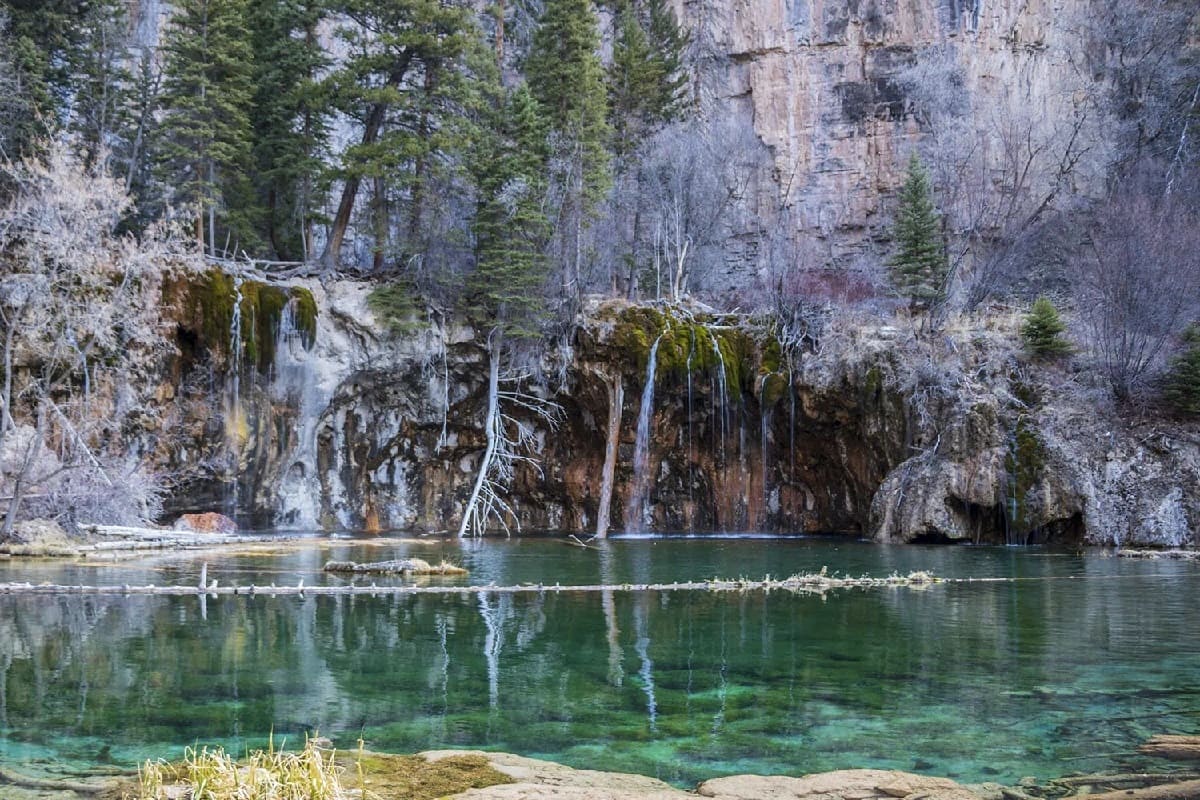Mystery Of Colorado’s Hanging Lake Waters

Have you ever wondered why Hanging Lake in Colorado has such clear, turquoise waters? This stunning natural wonder, located in Glenwood Canyon, attracts thousands of visitors each year. The lake's unique color and clarity come from a combination of geological and biological factors. Minerals from the surrounding limestone cliffs dissolve into the water, creating a pristine environment. Additionally, the lake's isolation and strict conservation efforts help maintain its beauty. Whether you're a nature lover or just curious about this hidden gem, understanding the science behind Hanging Lake's waters adds another layer of appreciation for this breathtaking spot.
The Enchantment of Hanging Lake
Hanging Lake, located in Glenwood Canyon, Colorado, is a natural wonder that captivates visitors with its crystal-clear waters and stunning scenery. This unique lake, perched on the edge of a cliff, offers a serene escape into nature. Let's dive into the mystery of its waters and explore some must-see spots around this magical destination.
The Unique Ecosystem
Hanging Lake boasts a rare and delicate ecosystem that contributes to its pristine waters. The lake's unique location and natural filtration system keep the water clear and vibrant. Here are some fascinating spots to explore:
Spouting Rock: Just a short hike from the lake, Spouting Rock is a waterfall that cascades through a hole in the cliff. The water gushes out with impressive force, creating a mesmerizing sight.
Dead Horse Creek: This creek feeds into Hanging Lake, providing a continuous supply of fresh water. The creek's journey through the canyon adds to the lake's allure.
Hanging Lake Trail: The trail leading to the lake offers breathtaking views of the surrounding canyon. It's a challenging hike, but the reward at the end is worth every step.
The Geological Wonders
The geological formations around Hanging Lake are as intriguing as the lake itself. These natural structures tell the story of the area's ancient past. Here are some geological highlights:
Travertine Deposits: The lake's edge is lined with travertine deposits, formed by the precipitation of calcium carbonate. These deposits create a unique, almost otherworldly landscape.
Glenwood Canyon: The canyon's towering walls and rugged terrain provide a dramatic backdrop for the lake. The rock formations here have been shaped by millions of years of geological activity.
Hanging Lake Fault: This fault line runs beneath the lake, contributing to its unique position on the cliff. The fault's movement over time has helped shape the lake's current form.
The Flora and Fauna
Hanging Lake is home to a diverse array of plant and animal life. The area's unique environment supports species that thrive in this delicate ecosystem. Here are some notable examples:
Columbine Flowers: Colorado's state flower, the columbine, can be found blooming around the lake. These delicate flowers add a splash of color to the landscape.
Brook Trout: The clear waters of Hanging Lake are home to brook trout, a species of fish that thrives in clean, cold water. Watching these fish swim gracefully through the lake is a peaceful experience.
Moss and Algae: The rocks around the lake are covered in vibrant green moss and algae. These plants play a crucial role in maintaining the lake's water quality.
The Conservation Efforts
Preserving the beauty and integrity of Hanging Lake is a top priority. Conservation efforts ensure that future generations can enjoy this natural wonder. Here are some key initiatives:
Visitor Limits: To protect the delicate ecosystem, the number of visitors to Hanging Lake is limited. This helps reduce the impact on the environment and ensures a more enjoyable experience for those who visit.
Leave No Trace: Visitors are encouraged to follow the Leave No Trace principles, which include packing out all trash and minimizing their impact on the natural surroundings.
Trail Maintenance: Regular maintenance of the Hanging Lake Trail helps prevent erosion and keeps the path safe for hikers. This ensures that the trail remains accessible while protecting the environment.
The Best Time to Visit
Timing your visit to Hanging Lake can make a big difference in your experience. Different seasons offer unique perspectives on this natural wonder. Here are some tips for planning your trip:
Spring: The spring months bring blooming wildflowers and lush greenery. The weather is mild, making it an ideal time for hiking.
Summer: Summer offers warm temperatures and long days, perfect for exploring the lake and surrounding trails. However, it can also be the busiest time of year.
Fall: Autumn brings cooler temperatures and stunning fall foliage. The changing leaves create a picturesque setting around the lake.
Winter: Visiting in winter offers a serene and quiet experience. The snow-covered landscape adds a magical touch, but be prepared for cold weather and potentially icy trails.
Why Hanging Lake is a Must-Visit
Hanging Lake's crystal-clear waters and unique geological features make it a standout destination in Colorado. The trail leading to the lake offers a moderate challenge, rewarding hikers with breathtaking views and a sense of accomplishment. The lake's ecosystem is fragile, so visitors must follow guidelines to preserve its beauty.
Whether you're an avid hiker or just love nature, Hanging Lake provides an unforgettable experience. The waterfalls, lush surroundings, and serene atmosphere create a perfect escape from daily life.
Planning a trip to Hanging Lake? Remember to book a permit in advance and prepare for a hike that’s both challenging and rewarding. This natural wonder is a testament to Colorado's diverse landscapes, making it a must-visit for anyone exploring the state.

